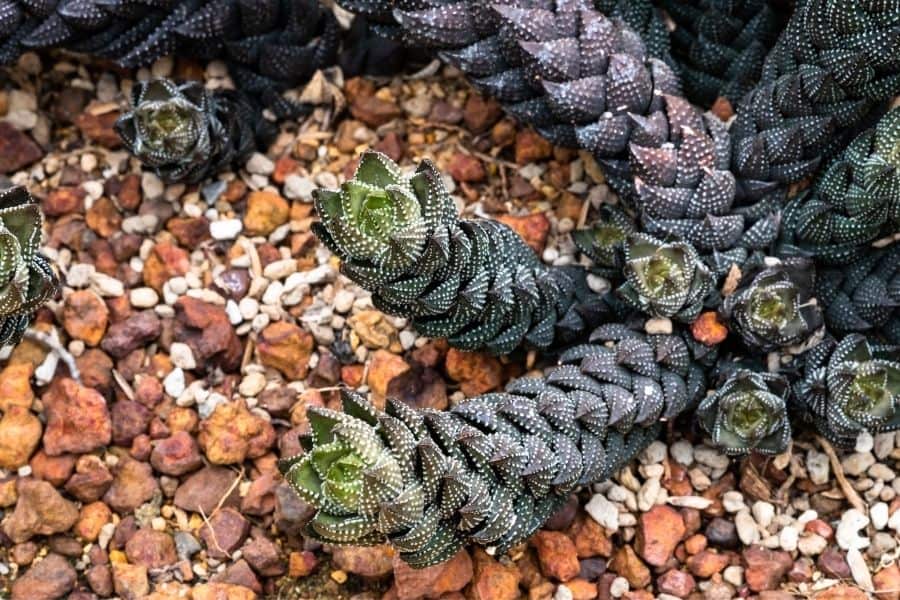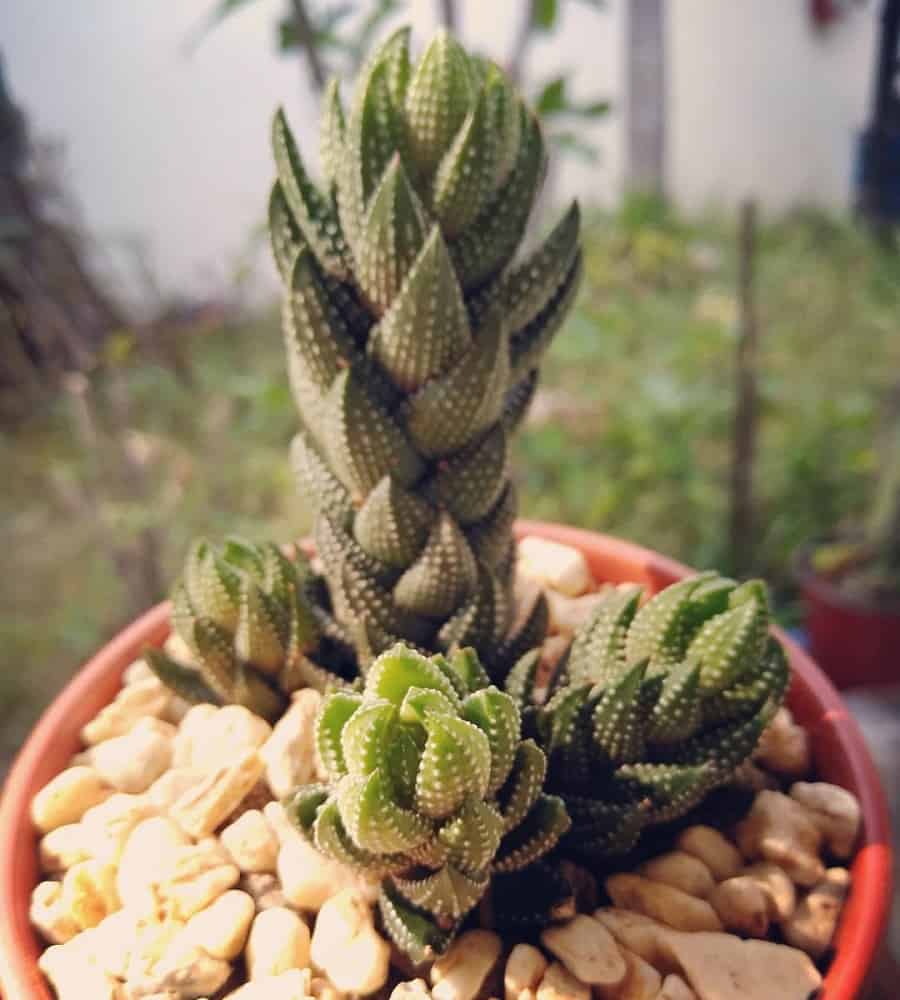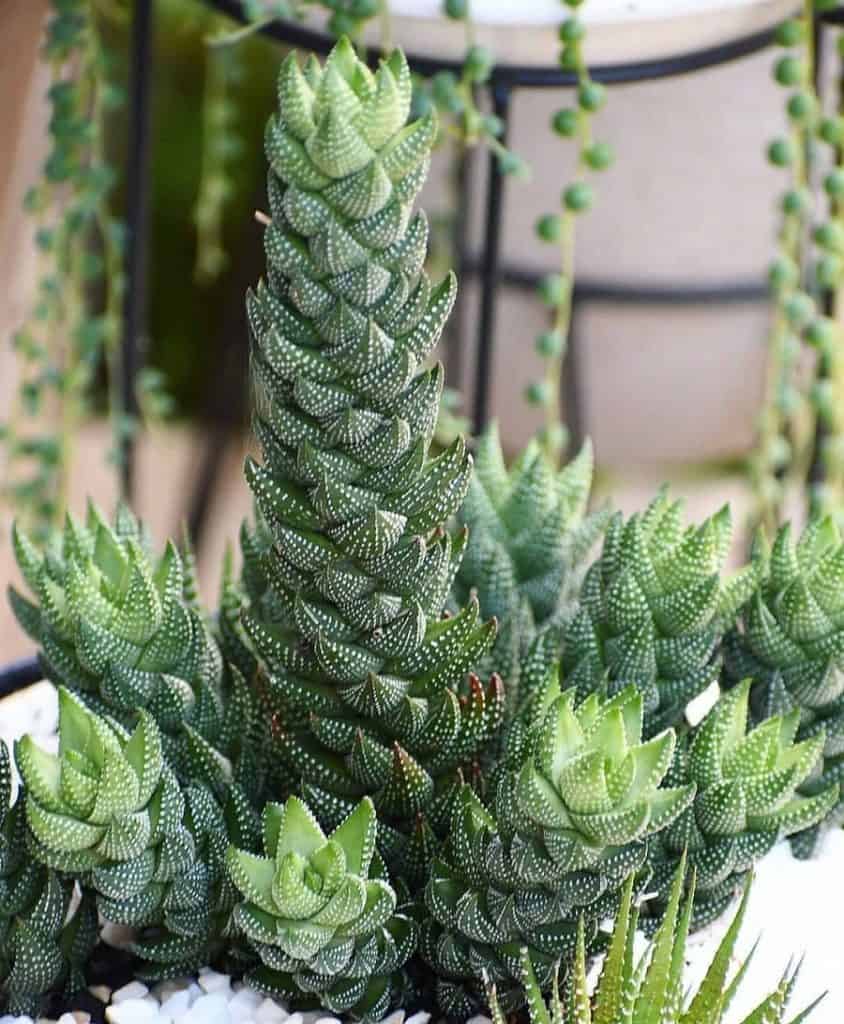Haworthia coarctata: The Tiny Succulent with a Big Impact (and How to Make It Thrive)
If you’re looking for a captivating and low-maintenance succulent to add to your plant collection, look no further than Haworthia coarctata. This tiny yet mighty plant hails from the arid regions of South Africa and Mexico, and with the right care, it can bring a touch of natural beauty to your home or garden.
In this comprehensive guide, we’ll uncover the secrets to helping your Haworthia coarctata thrive, from getting the lighting and watering just right to propagating new plants with ease. Let’s dive in and unlock the potential of this charming succulent!

Related Post:
14 Types of Haworthia With Pictures
Contents
Haworthia coarctata Care Guide
Light
Haworthia coarctata loves bright, indirect light. While it can tolerate some direct sun, too much exposure can cause the leaves to shrink and discolor. Aim to place your plant in an east- or west-facing window, or use a grow light to provide the optimal 6-8 hours of light it craves each day. Introduce your Haworthia to direct sunlight slowly, allowing it to gradually acclimate.
Water

Overwatering is the number one enemy of Haworthia coarctata. These succulents are prone to root rot if their soil stays too moist. During the growing season from April to November, water your plant once a week, allowing the top inch of soil to dry out between waterings. In the winter, cut back to watering only occasionally, as the plant goes into a resting period. Avoid getting water in the center of the rosette, as this can lead to rot.
Soil
Haworthia coarctata prefers a well-draining, mineral-rich soil. Mix together 1 part sharp sand and 3 parts loose, coarse compost to create the perfect substrate. Avoid heavy, clay-based soils, which can trap moisture and suffocate the roots. Be sure your planter has adequate drainage holes to allow excess water to escape.
Fertilizer
Opinions vary on whether to fertilize Haworthia coarctata, but a diluted cactus or succulent fertilizer applied monthly during the growing season can help support its growth. Start with a weak solution and monitor your plant’s response.
Temperature and Humidity
These succulents thrive in cool, dry conditions. Aim to keep your Haworthia between 41-59°F in the winter, and 68-77°F the rest of the year. Provide good air circulation and avoid humid environments, as stagnant air can lead to fungal issues.
Pests and Diseases

Fortunately, Haworthia coarctata is relatively pest-resistant. However, keep an eye out for root insects, mealybugs, and scale, which can hide in the leaf rosettes or soil. Treat any infestations promptly with insecticidal soap or other appropriate remedies.
Pruning
Unlike many plants, Haworthia coarctata doesn’t require regular pruning. Simply remove any dried or damaged leaves as needed to maintain its tidy appearance.
Repotting
Plan to repot your Haworthia coarctata every 2-3 years, preferably in early spring when the plant is actively growing. Choose a shallow container just slightly larger than the current one and use a fresh, well-draining potting mix.
Haworthia coarctata Propagation Guide
Propagating Haworthia coarctata is incredibly rewarding and easy to do at home. You can multiply your plant collection by taking offsets, leaf cuttings, or growing it from seed. Let’s go through the step-by-step process for each method:
Propagating from Offsets
- Look closely at the base of your Haworthia plant – you may spot small offsets or “pups” developing.
- Carefully remove an offset that has well-established roots using a clean, sharp knife or scissors.
- Allow the offset to dry out for 2-3 days so the cut end can callus over.
- Plant the offset in a well-draining potting mix, burying it up to the base of the leaves.
- Water lightly and place in bright, indirect light. New growth will soon appear.
Propagating from Leaf Cuttings
- Gently twist or cut a healthy leaf away from the main plant, leaving a small portion of stem attached.
- Allow the leaf cutting to dry out for 3-4 days so the cut end can form a callus.
- Lay the leaf flat on top of a well-draining potting mix and lightly water.
- Place the container in bright, indirect light and mist the soil occasionally to keep it evenly moist.
- In 4-6 weeks, you should see tiny new plants sprouting from the leaf.
Propagating from Seed
- Haworthia coarctata seeds can be sown year-round, though temperatures between 59-68°F are ideal.
- Fill a shallow container with a fine mineral potting mix, such as pumice.
- Sprinkle the tiny seeds over the surface and lightly press them in, but don’t cover them.
- Mist the soil to keep it evenly moist, but avoid overwatering.
- Place the container in bright, indirect light and monitor for germination in 2-4 weeks.
- Once seedlings appear, gradually introduce more light and be patient as the young plants mature.
With a little care and attention, you’ll have a thriving Haworthia coarctata colony in no time. Enjoy watching your plants multiply and share the joy with friends and family.
